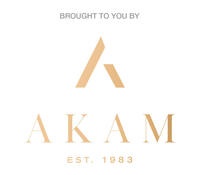HABITAT
It Takes Experience to Do Terra Cotta Work on Budget and on Time

At the Ansonia on Upper Broadway, Koenigsberg Engineering replaced more than 600 pieces of terra cotta (pictures courtesy of Koenigsberg Engineering).
As part of our ongoing Problem Solved series, Habitat interviewed Richard Koenigsberg, founder and president at Koenigsberg Engineering.
The rules are tougher now. Anybody in a building that's more than six stories tall knows that Local Law 11, now known as the Facade Inspection and Safety Program, is the primary driver of facade repairs. Every five years you do an inspection, and that’s when you find out if you need to do work. And the Department of Buildings, which reviews the inspection reports, can be very tough. In the beginning they weren’t. When the program started back in 1980, you basically just submitted a report, and they accepted it. But as each year goes by, they get tougher. For instance, they prefer to see engineers replace damaged terra cotta rather than just repair it in place. And that's been a big change.
On any building that’s a landmark, you’re also answering to the Landmarks Preservation Commission. And about two years ago they began demanding that any replacement of terra cotta below the sixth floor must be done with real terra cotta. Which gets very, very complicated.
Limited supply requires planning. Terra cotta is made of clay that’s fired in a kiln, and almost all the terra cotta today is made either by Gladding, McBean in California or by Boston Valley, which is in upstate New York. A third company in England, called Derwens, has done some jobs in New York. They’re all a little more backlogged now than usual, so it’s important that you plan properly.
Most pieces tend to be made out of molds. The molds have to be 10% bigger than the actual piece because after they make the piece in clay, it's put on a drying floor for anywhere from a week to two months. As it dries, it shrinks. If they put wet clay in the kiln, it would crack.
(Like what you're reading? To get Habitat newsletters sent to your inbox for free, click here.)
We will survey the building and make a set of drawings that identifies every single piece of terra cotta on the building. And then we label each one and identify its condition on a scale of one to 10, with 10 meaning it must be replaced. I might be able to pull some pieces out, repair and reinstall them. And the reason I'll do that is because the molds are such an expensive process — anywhere from $1,000 to $2,500 for the average piece.
I actually do a whole separate set of bid documents and send it to the vendors. What I'll put in those documents is a picture of each piece with the dimensions and the number that we're going to need. Since measurements are extremely important, we pull a damaged piece out and ship it to the vendor. The vendor then does a shop drawing and sends it to the engineer. Once the engineer signs off, it’s what’s called an approved shop drawing. And then we'll get a price.
Go with a pro. I wouldn't consider using anyone who hasn't replaced terra cotta on at least a dozen buildings because it requires so much more effort. Terra cotta is a unique animal. It takes years of learning from mistakes to be able to schedule all the work in such a way that you don't get slowed down. If you absolutely are going to need to replicate terra cotta, you want someone who has done it a lot. That's the single most important advice I could give.




